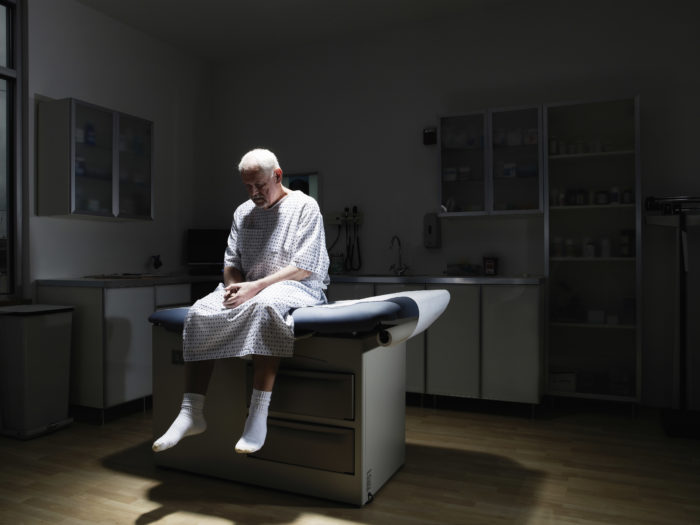Speaking Up About Suicide Risk: How to Remain Vigilant in Workers’ Comp

The topic of suicide is an uncomfortable one to include in our dialogue, but that doesn’t mean it should be avoided or ignored; suicide rates in this country are on the rise.
The CDC’s data shows that the year 2022 brought an all-time high suicide rate in the United States, a 3% increase from 2021. These numbers indicate that suicide is more common now than at any point in history since World War II.
Additionally, there are several factors that can contribute to a person’s potential vulnerability to suicide risk. These include certain occupations as well as “certain factors associated with the work,” according to Dr. Geralyn Datz, president, and clinical director of Southern Behavioral Medicine Associates. These occupations that are susceptible the most include construction, health care and farming.
Suicide is a major problem not only in this country, but in the workers’ comp industry. Datz noted that while the industry has taken progressive steps in acknowledging and addressing mental health conditions, the spotlight needs to grow larger.
And it did at National Comp 2023 in Las Vegas. Datz moderated a session during which panelists discussed the ripple effects of suicide in their personal and professional spheres, the impact it has on the workers’ comp space and how we can best support employees at risk of committing suicide.
It’s Uncomfortable, but Should Be Talked About
On the session stage, Datz was joined by Yvonne Guibert of the Institutes of Health, Dr. David Hanscom of Vertus Inc. and David Vittoria of Carisk Partners. The session began with the panelists discussing their personal run-ins with suicide.
Guibert grew up with a mother diagnosed with bipolar disorder, which would cause her to alternate between periods of mania and depression. Guibert was 19 years old when her mother took her own life. Through therapy, Guibert was able to arm herself with tools and resources to help her work through the trauma she endured early on in her life.
Dr. Hanscom has had 20 clinical colleagues die by suicide, including one of his medical school classmates. After 15 years suffering with chronic migraines, Hanscom also found himself on the brink of a suicide attempt. During the session, he said that he doesn’t know why he didn’t end his life that day, but he’s adamant about sharing what he’s learned about the suicide epidemic to help others who may be teetering between life and death.
Vittoria had two members of his family attempt suicide and like Hanscom, has had several colleagues die by suicide. They were all mental health professionals.
“Those six colleagues probably had a combined 300 years of clinical experience, focusing on those with prominent risk factors that typically lead to suicide,” Vittoria said. “So, this topic resonates with me both personally and professionally.”
The Rising Rates
Guibert, Hanscom and Vittoria’s proximity to suicide are not uncommon, Datz noted during the session.
Prior to the start of the pandemic, the Surgeon General declared the “Loneliness Epidemic,” citing humans’ struggle to connect and form bonds with others largely stemmed from the intense use of social media. Once the pandemic was in full swing, “there was an overall 25% increase in the prevalence of anxiety and depression worldwide,” Datz said.
“This is a human condition problem,” Hanscom said.
He went on to explain that the functions that our brains undergo to withdraw from physical pain are the exact ways our brains process mental pain. The difference is that our brains are not equipped with a withdrawal response from mental pain.
“We have no protection from mental pain, so we develop repetitive, unpleasant thoughts,” Hanscom said. “We experience them repeatedly, we suppress them, and that fires up our nervous system even more.”
Vittoria also noted that the mental health epidemic coincides directly with the opioid epidemic.
“Layer [the opioid epidemic] on top of COVID-19 and factor the already marginalized populations with lower access to health care and mental health care … in the social media age,” he said. “This has all fanned the flames that bring us to where we are today.”
The Workers’ Comp Lens
Because suicide is clearly a global, humanity issue, it’s a definitive risk within the workers’ comp space. Just as certain occupations and age groups are more susceptible to the risk of suicide, there are “certain work factors that can be associated with suicide attempts and completions,” Datz said.
She continued, “These [factors] — job loss or related stress, financial stress — have a real link to work injury, addiction, and suicide.”
And while there’s no ignoring the link between an injured workers’ mindset and their road to recovery, Vittoria noted that the industry may not always be enthusiastic about paying for those mental health resources.
He said, “We turn a blind eye to the compensability of the emotional impact after an injury.”
In addition, any injured worker can find themselves vulnerable to anxiety or depression; it does not necessarily depend on if this worker was suffering from these mental health issues prior to injury. From financial unknowns to the fear of not being able to fully return to work, the injured worker is highly susceptible to the onset of anxiety and depression.
So, what can workers’ comp professionals do to address the risk of suicide in injured workers? Sometimes, it’s as simple as opening the dialogue.
“I think a lot of times, the injured workers are really hoping to be listened to,” Datz said. Additionally, there are resources that employers can deploy for those injured workers suffering. The Center for the Study of Traumatic Stress also provides free training that can equip the workers’ comp professionals with psychological First Aid.
The panelists’ discussion emphasized the importance of maintaining dialogue around the risk of suicide. And although “it’s not easy to talk about suicide,” as Datz reiterated during the session, avoiding the topic forms a stigma.
Keeping the conversation going in the workers’ comp space, on the other hand, could save lives. &










